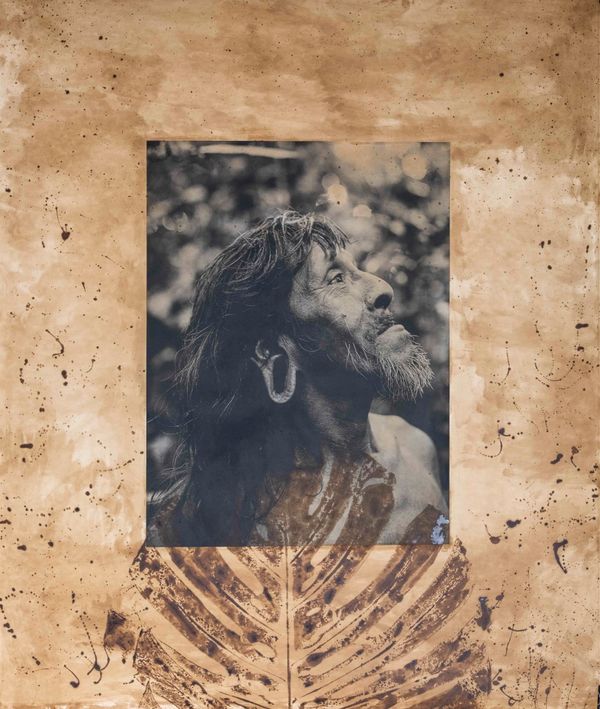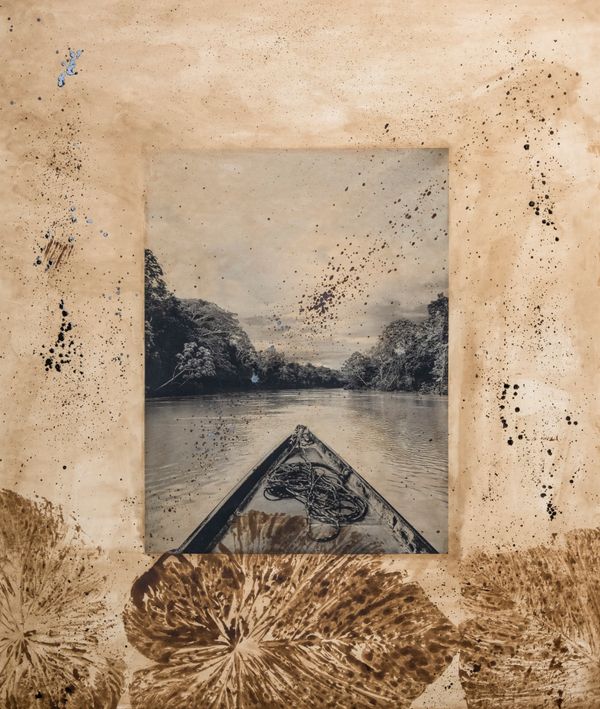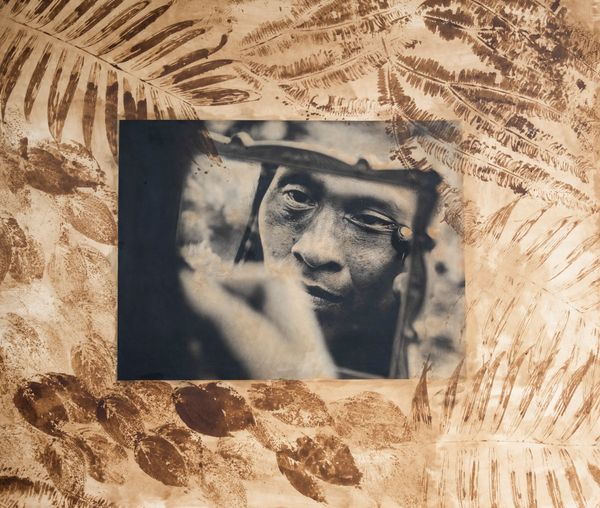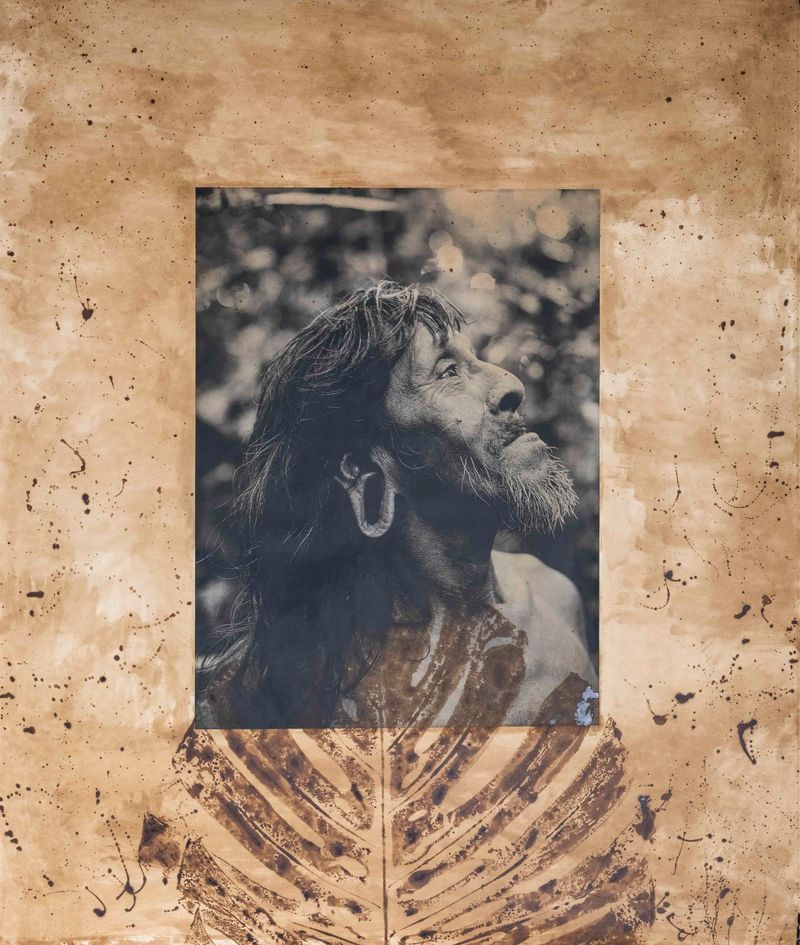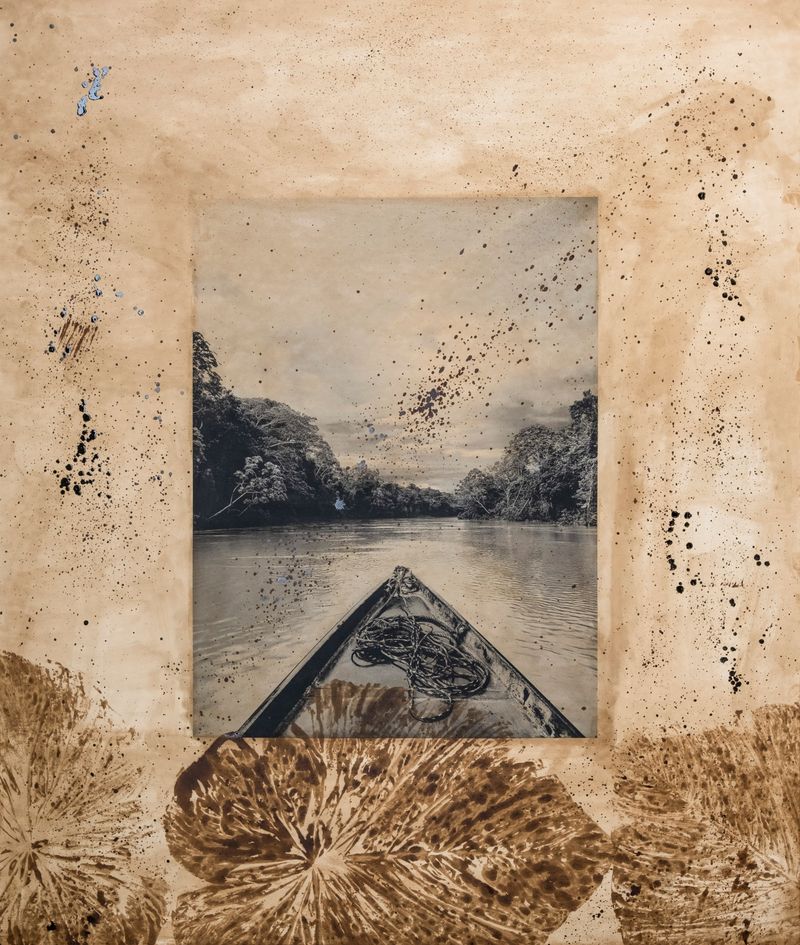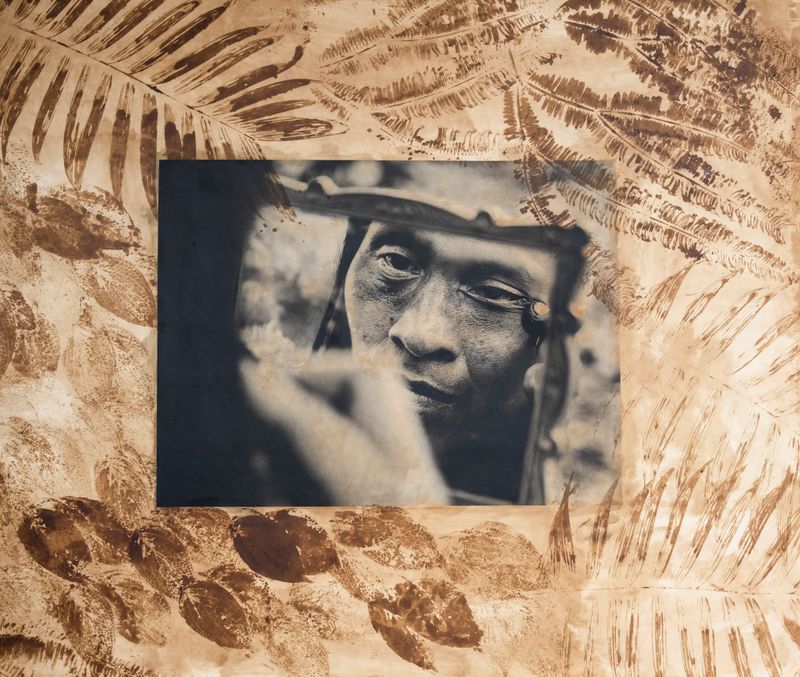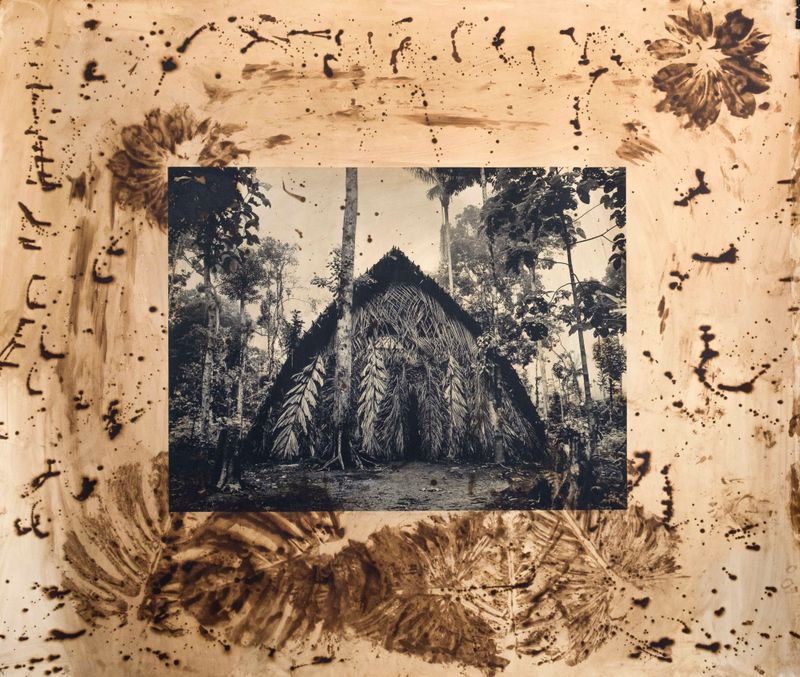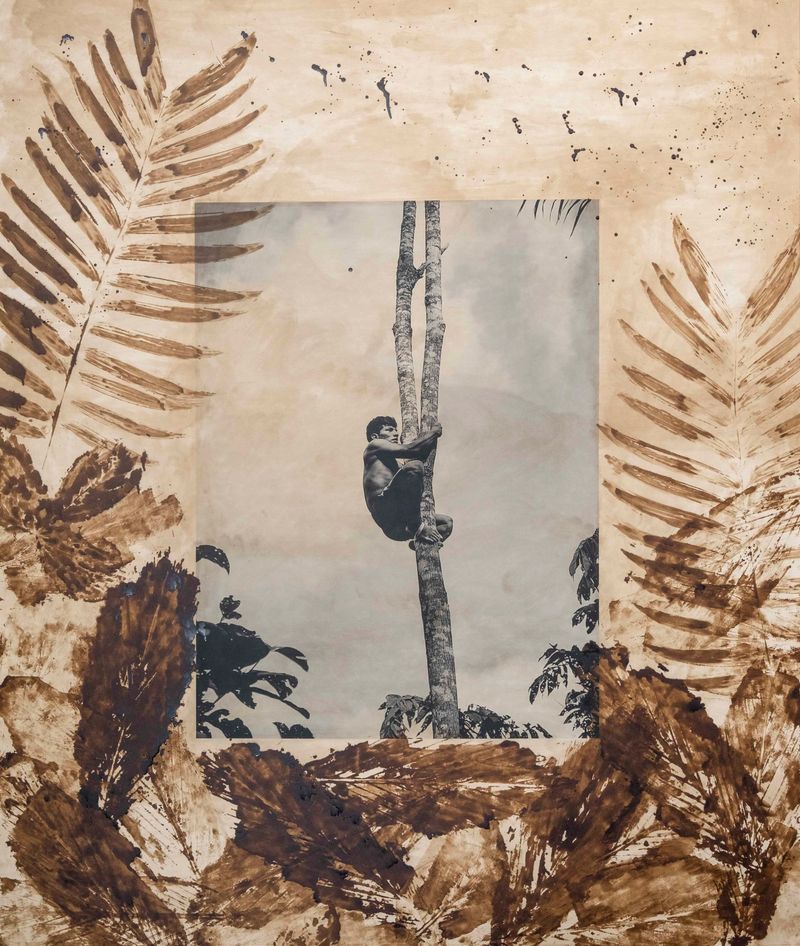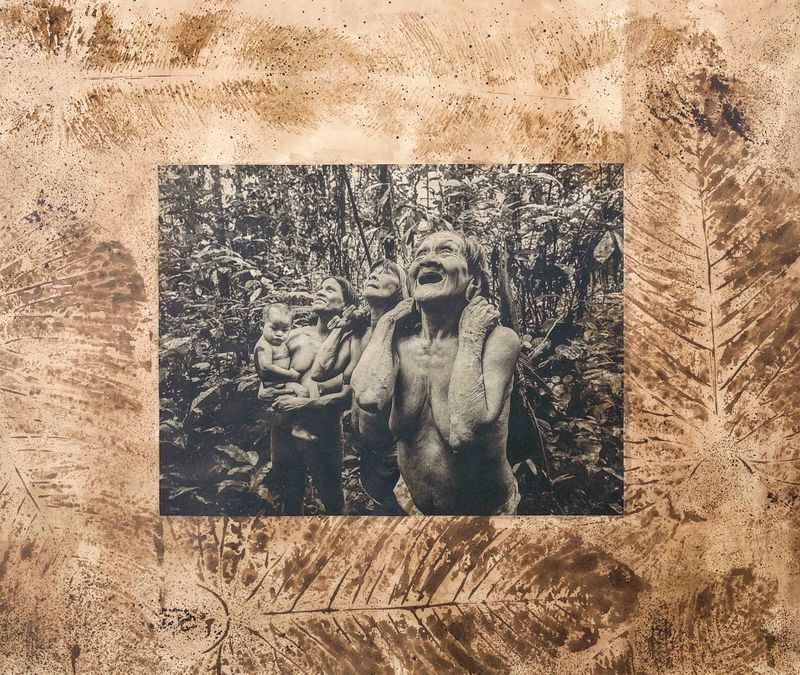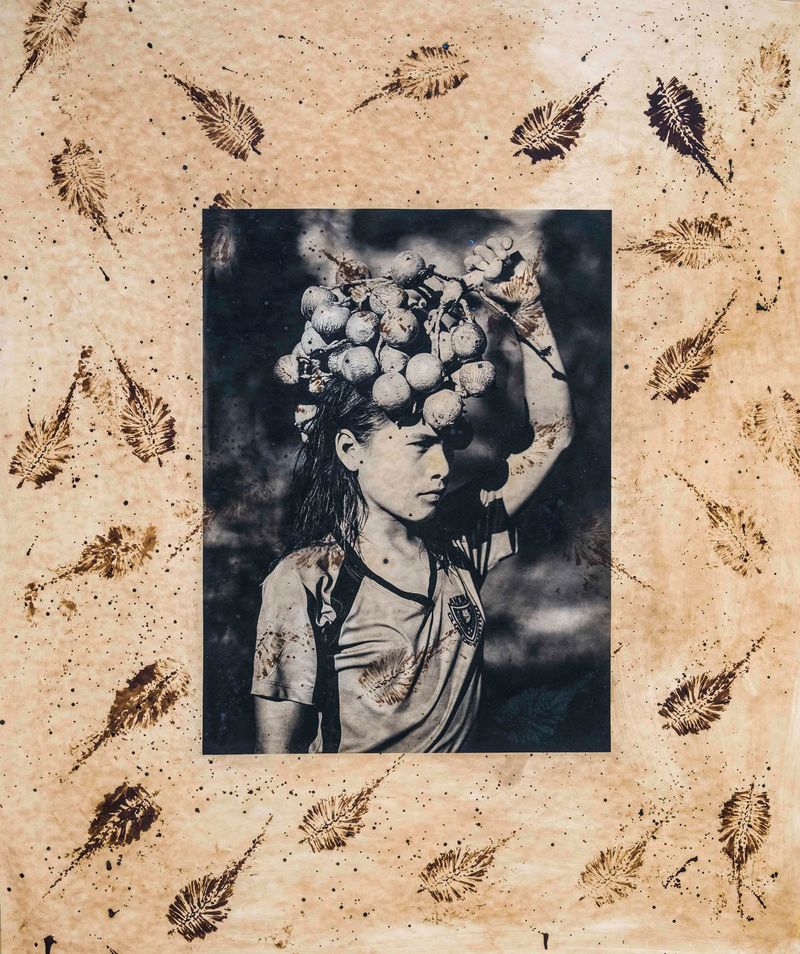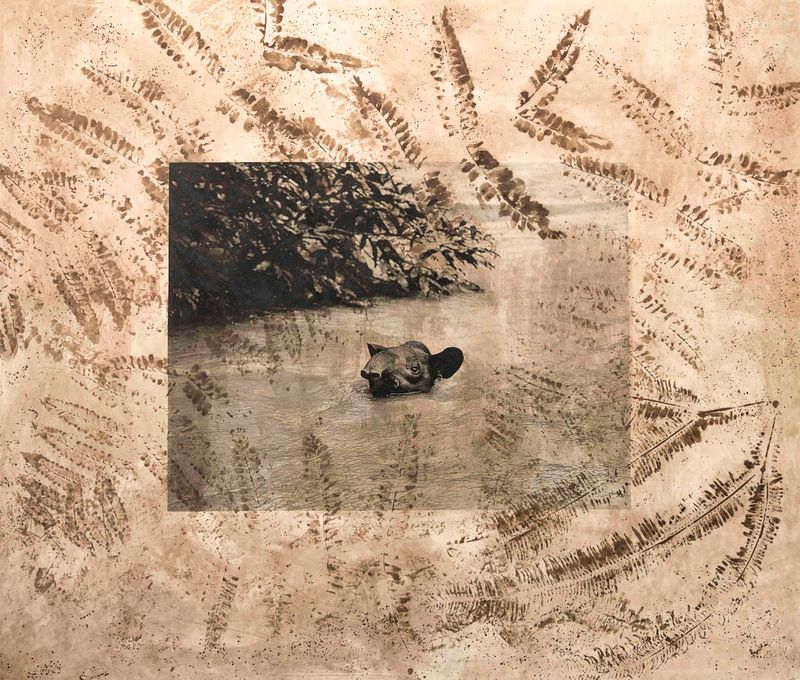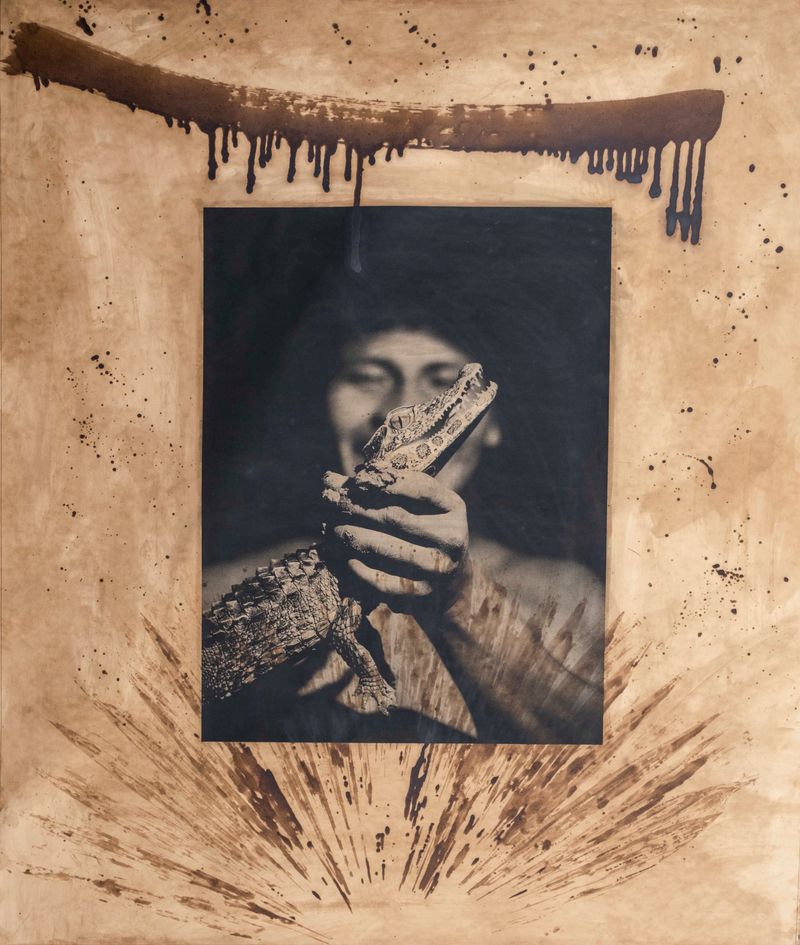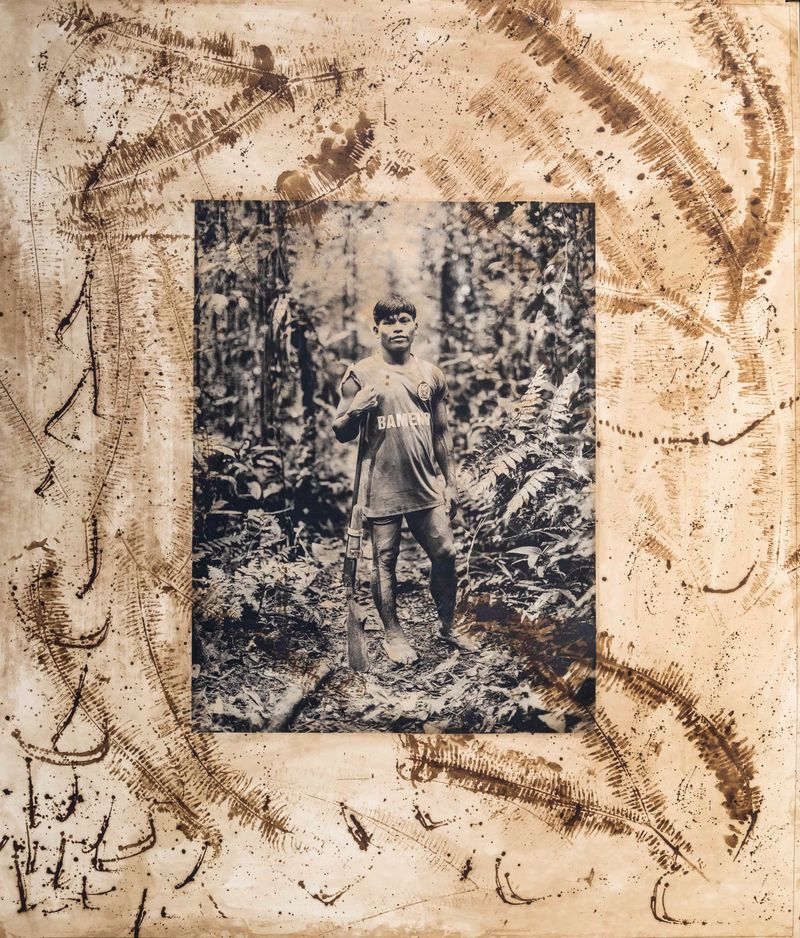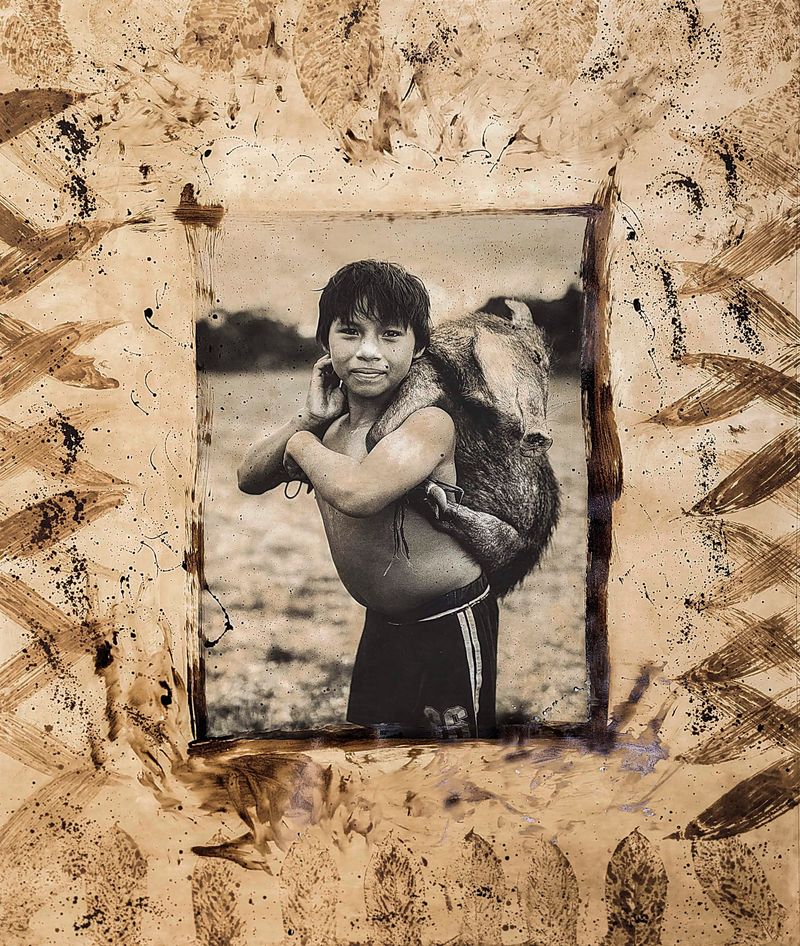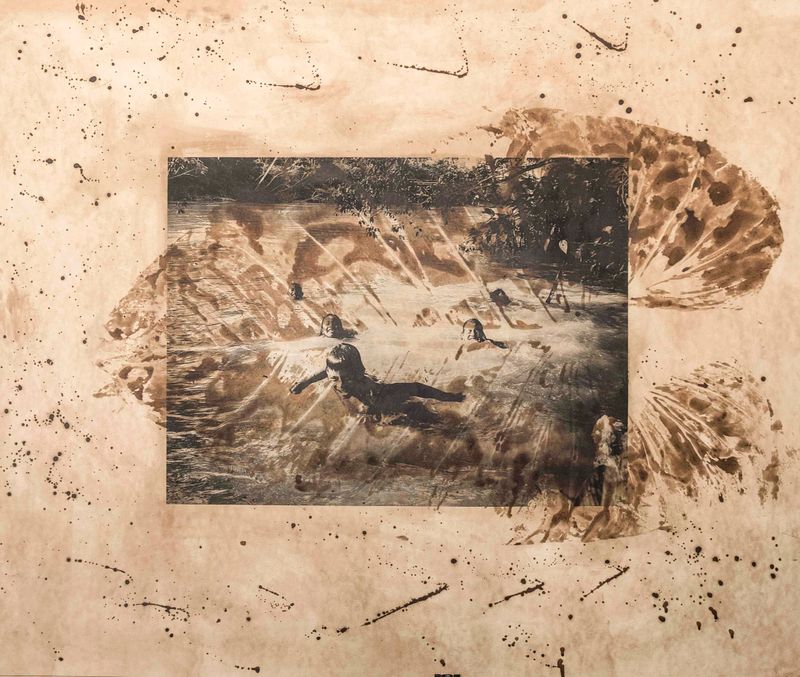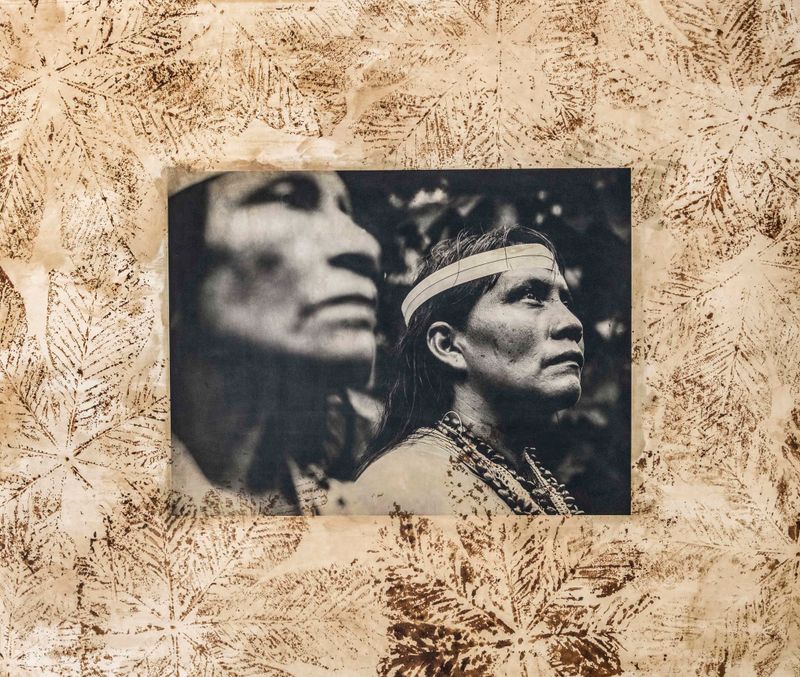Oil Spill in the Amazon
-
Dates2018 - Ongoing
-
Author
- Location Ecuador, Ecuador
This photo essay seeks to create a representation of the impact of oil exploitation on indigenous communities in the Ecuadorian Amazon. The photos in the series are printed on cotton paper in large format and combine images of the daily life of the Waorani peoples with crude-oil marks made with a large variety of leaves from the Amazon rainforest.
Even though oil exploitation has wreaked havoc in much of the Ecuadorian rainforest since the 1970s, it´s probably the Waorani people who have suffered the wrath of oil exploitation most violently. The Waorani are the tribe of most recent `contact´ in the Ecuadorian Amazon. They had lived for centuries in the jungle as hunters and gatherers, fiercely defending their territory against any intruders. Their warrior prowess and the force with which they had fought outsiders had earned them name of ‘aucas’ or savages. However, oil companies coveted their land and missionaries their souls. And so, the Waorani were pulled from the jungle to the crosshairs of an oil-thirsty modern society. Since then, the Waorani people have known little more than oil exploitation and the devastation that accompanies it: oil spills, pollution, logging, prostitution, and alcoholism.
This ongoing project comes at a time of an expansion of the oil and mining frontier in the Ecuadorian Amazon. The continued oil spills, the poisoning of soil and rivers, and the increased illegal logging and hunting are threatening the lives of indigenous peoples such as the Waorani. I hope that the combination of the images of the daily life of the Waorani and the marks and stains made with crude-oil effectively communicate the violence and the destruction of extractive industries and its brutal impacts on indigenous peoples.
